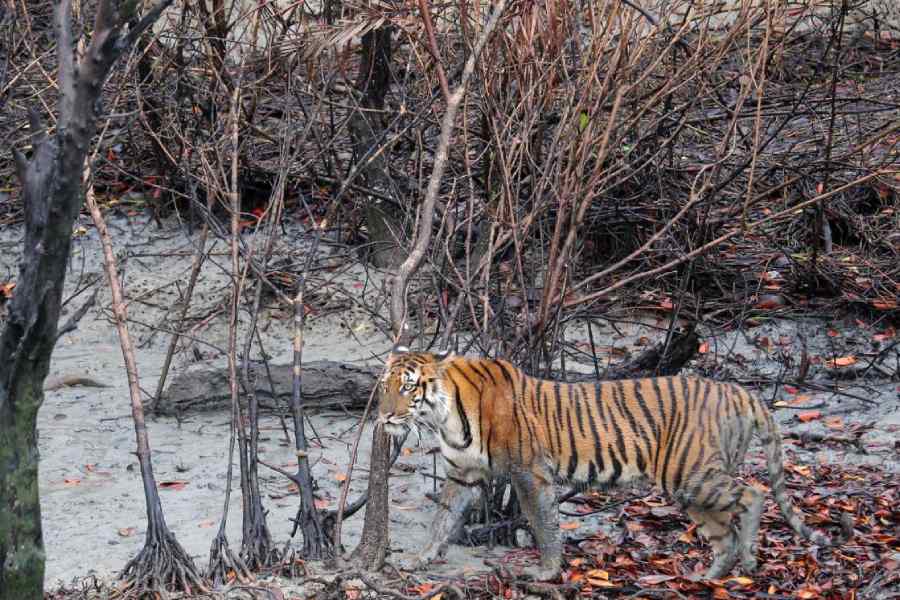The tiger population in the Sunderbans has almost reached saturation but faces a threat from the lack of planning to combat climate change, an expert told The Telegraph on the eve of International Tiger Day, July 29.
Retired scientist Y.V. Jhala said the forest, a Unesco world heritage site, is a global hotbed of climate change but has hardly any plan in place to combat its effects.
According to the latest national tiger census, the 4,000sqkm Sunderbans forest has 101 tigers.
“The number of tigers may fluctuate but it is nearing the carrying capacity; and it’s a very healthy population,” said Jhala, formerly with Project Tiger and the National Tiger Conservation Authority.
He linked the low tiger count in the Sunderbans to the limited prey base.
“You cannot make it (the tiger population) any larger because the carrying capacity is dependent on the preys — such as deer and wild pigs — and you can’t have a high density of those because of their limited food sources in the Sunderbans,” he explained.
Pradeep Vyas, a veteran forester overseeing the Sunderbans, said: “The number (of tigers) has almost reached carrying capacity under the present conditions, but it can be increased if the pressures on the Sunderbans forest, especially the thousands of fishermen and others regularly encroaching on the forest area, can be reduced.”
He added: “Even the minimum disturbance can impact the breeding biology of tigers.”
Jhala said: “Climate-change impacts on the Sunderbans are rising with every passing day. The situation will be disastrous because if the ocean goes up by one metre, half of the Sunderbans will be submerged.
“In that case, where will the tigers go? We do not have a strategy to counter that kind of situation. I don’t see a very bright future for the Sunderbans tigers in the face of rising climate change.”
He said the Bangladesh part of the Sunderbans was better prepared to counter climatic impacts.
“We do not even have a Lidar map of the Sunderbans on the Indian side, though the Bangladesh side has already prepared such a map,” Jhala said.
Lidar (light detection and ranging) technology is used to gather high-resolution spatial data about forests.
“Such a map is crucial as it will let you know which areas may be submerged in the future, and the plan can be made accordingly,” Jhala said.
A senior Union forest department official admitted that action against the impacts of climate change has been an Achilles heel for all the tiger reserves in the country, including the Sunderbans.
His comments were based on a report by the Dehradun-based Wildlife Institute of India, the National Tiger Conservation Authority, and agencies under the Union environment ministry.
The report, Management Effectiveness Evaluation of tiger reserves in India, 2022 (fifth cycle), said “carbon capture and climate change” had received the lowest score (60 per cent) among the more than 30 indicators considered for evaluation.
“We carried out a study in the forest areas of the Sunderbans in 2011 after Cyclone Aila, which recorded significant climatic impacts, particularly an increase in salinity,” said Biswajit Roy Chowdhury, a wildlife expert with the non-profit NEWS and a member of Bengal’s wildlife board.
“The impacts must have increased manifold over the years and need assessment.”
Roy Chowdhury added that the issue needed to be prioritised in the Sunderbans tiger management plan.
“We do not have any structured data but the forest area was significantly impacted during cyclones like Amphan, Bulbul and others,” a senior Bengal forest official said.










